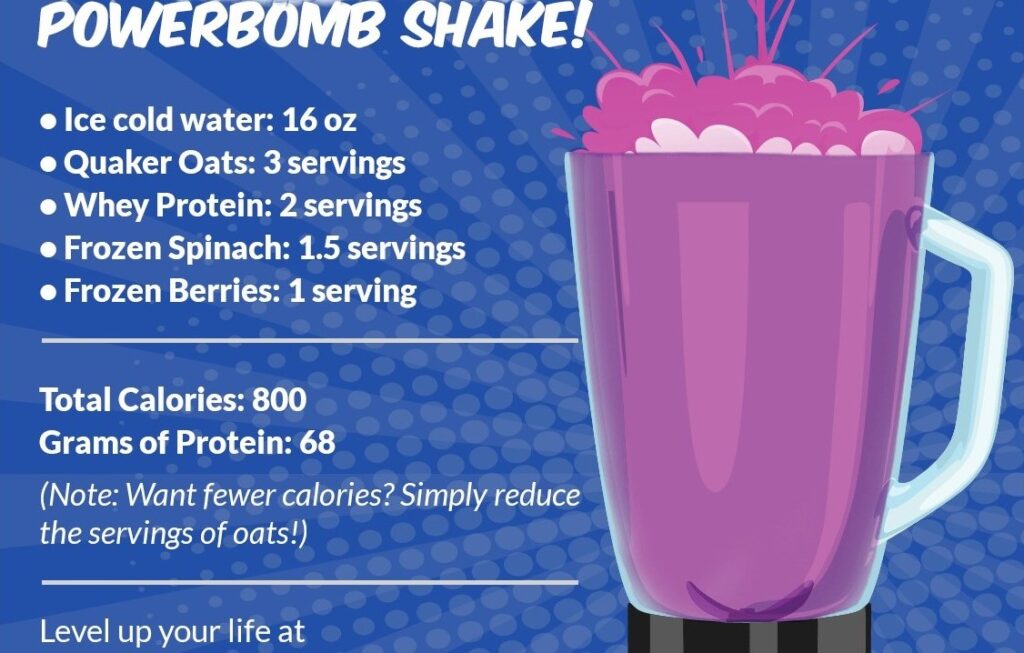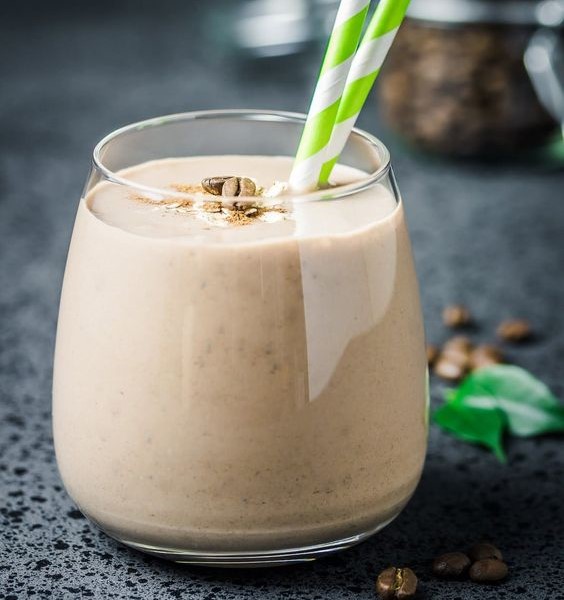Interested in Incorporating Protein Shakes into Your Routine but Unsure Where to Start?
You’re in luck! Having been a protein shake enthusiast for years, the best personal trainer Toronto is here to spill most of my secrets and guide you through the process.
In Part 2 of our Comprehensive Protein Guide, I’ll cover the following:
- Are protein shakes good for you?
- How much protein do I need every day?
- What’s the best protein supplement to buy?
- How to use protein powder
- How to make protein shakes taste better
- Should I drink my protein before or after my workout?
Remember to explore Part 1: ‘Determining Your Daily Protein Needs.’
With this knowledge and a quality blender (discussed here), you can seamlessly integrate protein shakes into your daily regimen.
Let’s prepare to shake up your routine!
Protein 101: Are Protein Shakes Good For You?
Protein, a vital macronutrient, plays a crucial role in muscle repair and is an essential component of our daily nutrition (well, duh, you might say).
Obtaining protein from various whole food sources is ideal, and natural food should take precedence in your dietary choices (again, ‘duh’ moment, right?).
Here are several examples of protein-rich foods:
- Poultry such as chicken, duck, and other birds
- Fish
- Various slices of meat
- Legumes like beans
- Eggs
- Quinoa
- Nuts
- Milk
However, there are many situations where you might consider supplementing your diet with protein shakes or protein powder (here’s where it gets interesting):
- I’m struggling to meet the recommended daily protein intake (I’ll cover this below!).
- You aimed to bulk up, needing more calories in your daily consumption, especially if you’re lean.
- Attempting to shed weight and looking to substitute an unhealthy meal with a protein shake as a meal replacement.
- Craving the convenience of a protein shake instead of preparing yet another meal.
In these scenarios, protein supplements or shakes can be incredibly beneficial!
Translating this into everyday language: If you’re strength training effectively and maintaining a proper diet, ensuring sufficient protein intake will aid in muscle growth and improved performance!

Now, defining ‘sufficient protein’ can encompass protein supplements and powders.
However, it’s crucial to remember that protein shakes aren’t a cure-all for all your health concerns:
- They’re NOT a requirement for maintaining good health.
- But they MAY assist in weight loss.
- They should be viewed as a SUPPLEMENT (zing!) to a healthy diet, not as a sole solution.
You still need to:
- Maintain a nutritious diet.
- Adhere to a strength training regimen.
- Get adequate sleep.
If you’re uncertain about how to embark on a strength training journey, don’t fret—I’ve got you covered.
How Much Protein Do I Need Every Day?
This excerpt is taken from our all-encompassing handbook, ‘How Much Protein Do I Need to Consume Daily?’
Contrary to the implications of protein supplement ads, ingesting an excessive 500 grams of protein each day is unwarranted. Such proclamations are often designed to urge rapid product consumption, encouraging you to make additional purchases.
Opinions on the necessary protein intake for the human body vary significantly among various sources, athletes, and experts. Everyone is unique, and your protein targets should align with your goals.
If you were seeking precise figures, let me simplify it for you.
While the current global Recommended Dietary Allowance (RDA) for protein stands at 0.4 grams per pound of body weight (0.8 grams per kilogram), research suggests this figure is too low and should be higher, regardless of body composition.
In simple terms, here’s a breakdown:
- If you’re overweight or obese, aim for 1.2–1.5 grams per kilogram (0.54–0.68 grams per pound). Base it on overall body weight without calculating your ideal body weight or lean mass.
- For those at a healthy weight, active, and striving to reduce fat, target 1.8–2.7 grams per kilogram (0.82–1.23 grams per pound), leaning towards the higher range as you get leaner or increase your caloric deficit (by consuming less or exercising more).
- If you’re active, healthy, and aspiring to gain muscle, strive for 1.4–2.4 grams per kilogram (0.64–1.09 grams per pound).
- Seasoned lifters on a bulk might benefit from intakes up to 3.3 grams per kilogram (1.50 grams per pound) to reduce fat accumulation.
These are initial values to experiment with as you observe the transformation of your body. Modify your intake based on your specific objectives.
In essence, protein consumption is imperative for everyone—whether passive or an athlete:
- Consuming adequate protein during bulking ensures muscle growth while minimizing fat gain.
- Engaging in strength training and maintaining sufficient protein intake while in a calorie deficit aids in retaining muscle mass and promoting fat reduction (you might even build muscle while losing fat simultaneously).
During a recent phase of leaning out, I maintained a substantial protein intake (240g at a body weight of 190 pounds), facilitating fat reduction, muscle building, and satiety.
To summarize, many of your daily meals should include a protein source.

If acquiring your daily protein needs through natural foods is challenging, contemplate integrating a protein supplement.
However, bear in mind that you also need:
- Appropriate systems in place.
- The right dietary approach.
- The suitable workout regimen.
With these elements in position, a protein shake can expedite your progress toward your objectives.
To aid individuals with demanding schedules like yours in making the most of their time in the gym and witness tangible progress, we’ve devised our 1-on-1 Online Coaching Program.
You’ll devise a personalized workout schedule and receive specific dietary advice tailored to your circumstances.
What’s the Best Protein Supplement to Buy?

When it comes to choosing a protein powder or deciding on a protein shake, you’ll be faced with numerous options:
- Whey protein is the most popular and cost-efficient protein supplement on the market. It is sourced from milk and contains all the essential amino acids. Whey is a byproduct of strained and curdled milk and is available in ‘concentrate’ and ‘isolate’ forms. It is rapidly absorbed by the body, making it an excellent choice for pre or post-strength training workouts.
- Casein protein, another milk-derived product, provides all the essential amino acids. It is absorbed slower than whey, prompting many individuals to consume it before bedtime, believing it aids muscle growth at night. However, a study suggests that the overall protein intake throughout the day is more crucial than the timing of protein consumption.
- For those unable to use whey or casein, egg protein powders from the protein found in eggs offer a viable alternative.
In summary, whey and casein proteins are milk-derived and assist in muscle recovery. Whey is absorbed more rapidly by the body and is generally more cost-effective than casein, making it our preferred protein choice due to its affordability and ease of consumption.
My preference leans towards whey due to its superior taste and mixability.

Using a blender can be a helpful tool to boost calorie intake for those aiming for weight gain.
Don’t stress about timing whey for post-workout and casein for sleep. Simplifying your approach is what matters.
Choose the protein option you enjoy the most and focus on meeting your daily protein needs; this will play a significant role in effectively building muscle.
For those seeking plant-based alternatives, here are our suggested plant protein powders (sourced from our Plant-Based Diet guide):
- Pea protein: A top-notch vegan protein powder made from yellow split peas, providing approximately 21 grams of protein in a quarter cup (28 grams) with around 100 calories. Some research even suggests its effectiveness in muscle building compared to whey. NAKED Nutrition offers a high-quality 100% pea protein powder worth considering.
- Rice protein: A quarter cup offers 22 grams of protein and approximately 107 calories. Combined with pea protein, it provides a complete amino acid profile essential for human growth. Growing Naturals is a reputable brand in this category.
- Hemp protein: Although slightly lower in protein content compared to pea or rice, hemp protein (one cup providing 12 grams of protein and 108 calories) makes up for it with a rich nutrient profile, including iron, zinc, and omega-3s—crucial for vegans. Nutivia offers a good hemp protein product for those interested.
- Soy Protein: Despite misconceptions about soy, it remains a viable protein source. A soy supplement can be beneficial if soy aligns with your dietary preferences and you struggle to meet your protein goals. However, if you need more clarification about soy, consider protein supplementation from the other sources mentioned above!
No matter your protein choice, here’s some valuable insight into protein shakes gathered from the expertise of 10 full-time coaches at the best personal trainer Toronto:
- When buying protein powders, opt for products with minimal additives. Look for labels that start with “whey protein concentrate” or “whey protein isolate,” followed by a few ingredients—often including ‘artificial or natural flavourings.’
- Choose a flavour that appeals to your taste! Protein powders are available in various flavours like vanilla, chocolate, strawberry, etc. Pick one that suits your palate.
- Inspect the ingredients and opt for a product from a reputable brand. Always conduct thorough research, even for popular brands like Muscle Milk, as some may have been found to contain metals such as arsenic.
- Many well-known protein powders sometimes live up to their promises. Check lab ratings and reviews of ‘high-quality’ protein powders to ensure you’re making an informed choice. The market is flooded with fraudulent products, so stay vigilant while shopping.
How to Use Protein Powder (How Do You Make Protein Shakes Taste Better?)

On the back of every protein powder container, you’ll often find the bold claim, ‘Mixes perfectly with 8 oz of water!’
While this holds for certain protein powders, for others, it can feel like trying to swallow freshly mixed concrete. Disclaimer: Never attempt to consume actual mixed concrete. You’re welcome.
So, the first step with your newly acquired protein powder is to mix it with water and gauge the taste.
Combining protein and water adds minimal calories to your daily intake while elevating your protein levels for the day.
Success.

Depending on your caloric goals or if you’re aiming for a meal replacement shake, you can get creative and craft your protein shakes with these steps:
- Incorporate fruits like bananas, strawberries, and blueberries—opt for frozen berry medleys from your local grocery store.
- Add a serving of veggies—blend in frozen spinach (you won’t even taste it!).
- Experiment with different liquids like almond milk, reduced-calorie orange juice, skim milk, or whole milk.
- Introduce healthy calorie sources such as peanut butter, almond, or cashew butter.
- Consider adding seeds like chia seeds or sunflower seeds.
Think of yourself as a scientist, concocting a unique blend each time. Keep a record of your ingredients and quantities until you find the perfect combination of macros and taste that aligns with your goals!
Important note: Your body still follows the laws of thermodynamics. Simply labelling it a “healthy smoothie” doesn’t negate the potential 1,000 calories it might contain!
If weight loss is your objective and you’re struggling, it’s a matter of consuming too many calories. Be mindful of the calorie content in your quickly-consumed protein shake.
However, if you aim to bulk up or build muscle, creating your high-calorie protein shake can effectively increase your daily calorie intake.
In my current bulking phase, I enjoy my post-workout shake, affectionately named the ‘Powerbomb Shake,’ which I have daily (no, it’s not patented).
POWERBOMB SHAKE
- Ice cold water: 16 oz
- Quaker Oats: 3 servings (120g)
- Whey Protein: 2 servings (62 g)
- Frozen Spinach: 1.5 servings (120g)
- Frozen Berries: .8 servings (120g)
And because we like to keep things fun, we’ve transformed the recipe into a handy graphic.

That shake’s macronutrient and caloric breakdown is 795 calories, 68g of protein, 106g of carbs, and 13g of fat.
IS INVESTING IN A BLENDER WORTH IT?
For over a decade, I stuck to using a budget-friendly blender like this one on Amazon!
Depending on your budget, you can also find blenders at local stores like Walmart, Target, Kroger, Publix, Sam’s Club, Stop & Shop, etc., for around 20 bucks.
However, I became a Vitamix enthusiast as I grew older and had more disposable income. They are expensive, but the quality justifies the cost.
I’ve probably burned out the motors of over ten cheap blenders, and since switching to a Vitamix, it has effortlessly blended my powerbomb shake ingredients twice a day in seconds.
If you have the means, it’s a worthwhile investment.
Alternatively, you can opt for a low-cost shaker bottle.
In my experience, these don’t mix as well as a blender, but a shaker bottle can be a lifesaver if you’re on the go without a blender option.
Note: if you’re using a shaker bottle, pour the water in first, THEN add the protein shake!
Here’s my strategy to ‘stay healthy while travelling’ with protein:
- Measure 2 servings of protein powder and store them in a sealed plastic bag.
- Place your sealed plastic bag of protein in an empty shaker bottle.
- When ready to consume, remove the plastic bag of protein, then add water to the bottle.
- THEN, add protein.
Are you adding the protein first? I can guarantee no amount of shaking will get all of that protein mixed into the liquid!
Should I Drink My Protein Shake Before or After My Workout?

Conventional wisdom suggests that consuming a protein shake immediately after a workout is crucial to maximize gains.
It also stresses the importance of regular protein intake every few hours to boost muscle protein synthesis.
But what does scientific research reveal?
WHAT RESEARCH INDICATES: The total protein quantity you consume throughout the day holds more weight than precisely timing your protein intake for muscle growth. Opting for a protein shake before or after a workout will enhance your physical performance and muscle growth, provided you’re training effectively!
If your schedule necessitates working out and you can only have your protein later in the day, do what works best for you!
Some individuals may prefer not to exercise on an empty stomach and find it beneficial to have a protein shake before their workout.
Hence, release the concern regarding protein timing and shift your attention towards practical training, managing overall calorie intake, and meeting your daily protein needs.
Getting Started Drinking Protein Shakes

Let’s summarize the essential aspects of integrating protein shakes into your daily routine:
- Protein supplements should be seen as a complement to a healthy diet, not a replacement for it.
- If cost-effective options are a priority, I recommend purchasing Optimum Nutrition Whey Protein online in your preferred flavour.
- For those with a more flexible budget, Jay Robb’s Grassfed Whey Protein is an outstanding choice (it’s my personal favourite).
- Consider including a protein shake before or after your workout. The timing is less crucial than ensuring you meet your daily protein intake for muscle growth and recovery.
- Viewing a protein shake as a convenient means to acquire quality protein when preparing a meal isn’t feasible due to time or cost constraints.
- If you’re on a tight budget, a basic blender will suffice. However, if you have the means, investing in a durable option like a Vitamix is advisable—it can last you for many years.
These guidelines should help you begin! Experiment with different flavours and ingredient combinations in your smoothies to create something you genuinely enjoy!
Do you have any favourite protein shake recipes?
Have more questions about protein powders and supplements?
Feel free to share them with us in the comments!

